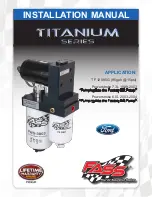
Emission Controls
Sources of Emissions
The combustion process produces carbon monoxide (CO), oxides of
nitrogen (NO
X
) and hydrocarbons. The evaporation of fuel in the fuel
tank also produces hydrocarbons. Control of oxides of nitrogen and
hydrocarbons is very important since, under certain conditions, when
subjected to sunlight, they react to form photochemical smog. Carbon
monoxide does not react to form smog, but it is toxic.
The Clean Air Act
The Clean Air Act* requires all vehicle manufacturers to explain in
writing the operation and maintenance of their emission control
systems.
Maintenance instructions are included on pages
103
-
108
; the opera-
tion of each system is explained below and on the following page.
Replacement Parts
The emission control systems on your new Honda were designed, built
and certified to conform with the Federal regulations implementing
the Clean Air Act. Honda recommends only the use of new, genuine
Honda parts or their equivalent. The use of other replacement parts
which are not of equivalent quality may impair the effectiveness of
your car's emission control systems.
Evaporative Emission Control System
The Evaporative Emission Control System is designed to prevent fuel
vapors from escaping into the atmosphere.
Fuel vapors from the fuel tank are directed into the charcoal canister
where they are adsorbed and stored while the engine is stopped or
idling. When the coolant temperature rises to a certain value, the
vapors are drawn into the engine through the throttle body and the
intake manifold during normal engine operation.
*In Canada, Honda vehicles comply with the Canadian Motor Vehicle
Safety Standards (CMVSS) on Emissions valid at the time they are
manufactured.
Summary of Contents for 1992 Accord Wagon
Page 109: ...Maintenance Schedule cont d...
Page 151: ...Specifications cont d page 105...












































